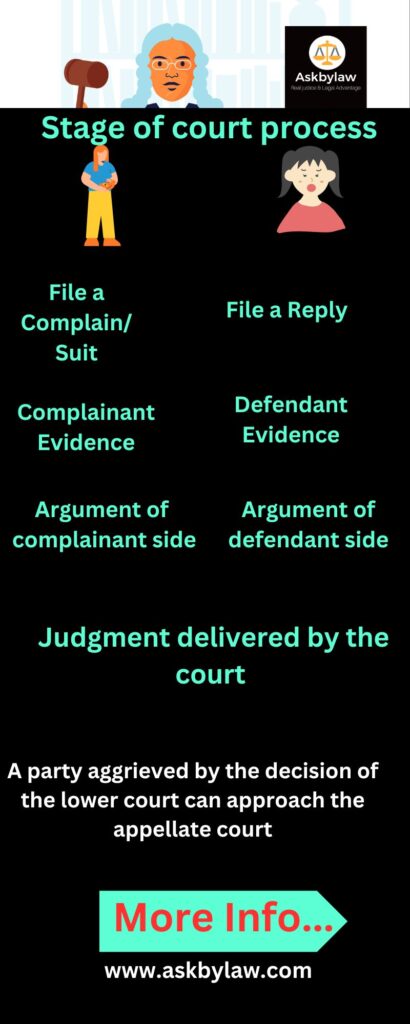


Any intellectual property is a valuable creation originating from the human mind. These creations can be artistic designs, designs, names, physical objects, and images.
Such physical assets are considered to be very indispensable and useful assets for every country or business. Also protecting intellectual property is a primary and useful concern for every creator of intellectual property.
We are here to discuss how to protect your intellectual property today in this article.
1. You need to know. What kind of intellectual property do you hold?
2. How should your intellectual property be well documented to ensure who owns it?
3. What tools are readily available in law for you to keep your intellectual property safe and secure? It is also very important.
4. When your intellectual property is damaged or your rights are violated for any reason?
With the help of today's article, you can make your intellectual property more secure and succeed in protecting the real value of intellectual property.
Eat to our comprehensive companion to guard your intellectual property! In the moment's presto- paced and technology-driven world, intellectual property (IP) has come an inestimable asset for businesses and individuals.
Whether you're an entrepreneur, innovator, artist, or creative professional, guarding your innovative ideas, inventions and cultural creations is essential to ensure that your hard work doesn't go unnoticed or exploited.
In this blog post, we will claw into the world of intellectual property and explore the significance of guarding it.
We'll bandy different forms of intellectual property, similar to patents, trademarks, imprints, and trade secrets, and punctuate the implicit pitfalls and challenges associated with each.
Understanding the value and significance of your intellectual property is just the morning. We'll guide you through practical ways, stylish practices, and proven strategies to effectively apply your IP rights.
From enforcing comprehensive security measures to navigating legal results, our end is to empower you with the knowledge and tools you need to cover your intellectual property means. But it does not stop there.
We know your intellectual property is not just about protection; It's also about maximizing its eventuality. That is why we'll also explore ways to work your IP, similar to licensing, hookups, and commercialization, to help you induce profit and unleash new openings.
Whether you're a seasoned professional or new to the world of intellectual property, this blog post is designed to be your go-to resource.
We have collected expert perceptivity, real-life exemplification, and practicable tips to help you navigate the complex geography of IP protection and take control of your intellectual means.
So, if you are ready to begin this trip to cover your intellectual property, cover your inventions, and harness the true value of your creativity.
Defining intellectual property and its colorful forms Intellectual property (IP) refers to impalpable creations of the mind that are defended by law.
It encompasses a wide range of creative and innovative means that individualities or businesses produce.
The main forms of intellectual property include Patents that cover new inventions and give exclusive rights to the innovator for a specified period. They give legal protection for the functionality and design of inventions, encourage invention, and help others from making, using, or dealing with patented inventions without authorization.
Trademarks are symbols, ensigns, names, expressions, or designs that distinguish and identify the source of goods or services.
They cover brand identity and help consumers separate between products or services in the request.
Trademark enrollment subventions exclusive rights and allows trademark possessors to help others from using analogous marks that may beget confusion among consumers.
Imprints cover original workshops of authorship, including erudite, cultural, musical, and dramatic workshops. They grant generators exclusive rights to reproduce, distribute, display, perform, and modify their workshop.
Brand protection arises automatically upon creation, furnishing legal protection against unauthorized copying or use of copyrighted material.
Trade Secrets Trade secrets are precious, nonpublic business information that provides a competitive advantage. It may include formulas, processes, client lists, software, or other personal knowledge.
Like patents, trademarks, and imprints, trade secrets are defended by nondisclosure agreements and other confidentiality measures rather than public enrollment.
Value and Importance of Intellectual Property mean Intellectual property means holding great value in moment's knowledge- grounded frugality.
It's the result of mortal creativity, invention, and investment of time, coffers, and trouble. Then are some crucial aspects pressing their significance and profitable value Intellectual property means can induce significant profit aqueducts through licensing, deals, or royalties.
They enable generators and businesses to monetize their inventions and creative workshop, drive profitable growth and encourage investment in exploration and development.
Competitive advantage IP means giving a competitive edge in the request. They separate products or services, enhance brand recognition, and establish a character for quality and invention. Intellectual property protection protects this advantage and helps businesses stay ahead in a competitive terrain.
Encourages Innovation, Intellectual property protection fosters a culture of invention by furnishing impulses for formulators, artists, and generators to partake in their ideas with confidence. It rewards and encourages the development of new technologies, and creative workshops’s and results in social challenges.
Despite the value and significance of the said intellectual property, it faces pitfalls and challenges, including violation of unauthorized use or violation of IP rights that may harm the exclusive rights of the creator or proprietor.
This can lead to financial loss, reputational damage, and loss of brand equity. It's critical to instantly identify and address cases of violations...
That imitating an original brand or invention poses a significant threat to intellectual property possessors. They can harm not only request share and profit but also consumer confidence and safety.
Guarding intellectual property becomes more complicated due to different legal systems and enforcement mechanisms. Businesses need to navigate transnational laws and establish effective strategies to cover their IP means worldwide.
It's essential for generators, experimenters, and businesses to understand intellectual property, its colorful forms, its value, and the pitfalls associated with the violation.
By understanding these introductory generalities, individualities, and associations can take an informed way to effectively cover and work their intellectual property means.
1. Music Industry Unauthorized sharing and downloading of copyrighted music has rebounded in significant profit loss for musicians and record markers. The arrival of digital platforms stressed the heightened need for brand protection and licensing models.
2. Technology Sector High-profile cases of patent violation, similar to those involving major Smartphone manufacturers, redounded in legal battles and significant fiscal agreements.
These cases emphasize the significance of guarding and guarding precious patents.
3. Fashion and luxury goods fake products imitating luxury brands not only beget profit loss but blemish the brand's character and adulterate its exclusivity.
This shows the negative impact of IP violations on fashion assiduity. These exemplifications serve as exemplary tales, showing the far-reaching consequences of shy IP protection.
They emphasize the significance of enforcing strong security measures to cover your creative means.
By proactively guarding your intellectual property, you can cover your inventions, maintain your request advantage and reduce the pitfalls of violation.
Real-life cases show the palpable impact of IP theft on businesses and individualities, buttressing the urgency and significance of IP protection in the moment's largely competitive and globalized business.
Trademarks, Imprints and Trade Secrets defended To effectively cover your intellectual property, call the following strategies special to each shape of IP Patents Work nearly with patent attorneys to guide through previous art quests and train complete patent operations. This ensures that your invention meets the conditions for patentability and receives the applicable legit.
Trademarks conduct a complete trademark hunt to insure your taken mark is accessible for enrollment. Once cleared, train a trademark operation with the applicable intellectual property department to secure exclusive birthrights to your brand name, totem or hallmark. Brand Carry the brand hallmark (©), your name, and the time of coinage on your initial workshop. While brand security arises automatically upon coinage, your brand is defended in the US. Registering with the Copyright Office provides fresh legit.
Trade Secrets utensil strong screen measures to cover your trade secrets, similar confining access to nonpublic information on a want-to-know base, enforcing confidentiality agreements with workers and mates, and maintaining secure IT systems to help unauthorized access.
Best Practices for maintaining sequestration and Precluding Unauthorized Access It’s important to keep your intellectual property nonpublic to help unauthorized use or exposure. Call the following stylish practices.
Exercise an NDA when participating in nonpublic information with workers, contractors, mates, or implicit investors. These agreements establish legit scores to conserve confidentiality and circumscribe the use of sensitive information.
Establish clear programs descrying the running of sensitive information, involving the use of particular bias, secure train storehouse, and secure message channels.
Physical and Digital Security Measures apply physical screen measures, similar to defined access to nonpublic areas and secure storehouses for physical documents.
Exercise encryption, firewalls, secure networks, and strong word programs to cover digital means. Regular inspection and monitoring conduct regular checkups of your IP means and internal processes to identify susceptibility and ensure compliance with screen protocols. Examiner responsible for any suspicious exertion or unauthorize access to sensitive information.
Empowering agreements and non-disclosure agreements play an important part in guarding your intellectual property birthrights Contracts exercise well-drafted contracts when engaging in collaboration, cooperation, or outsourcing arrangements. Easily outline power birthrights, circumscriptions and suffered usages to cover your IP means.
#IPprotection #secureyourideas #Creativerights #Innovationinspiration
Still, call a licensing arrangement, if you want to monetize your IP. Craft a licensing consensus that outlines the tours and conditions for the empowered use of your IP while maintaining control over its quality and veracity.
Non-Disclosure Agreements( NDAs) When telling nonpublic information to third parties, similar to implicit investors or business mates, exercise an NDA to establish legit walls and help unauthorized exposure or use of your personal information.
By enforcing these strategies and stylish practices, you can significantly enhance the security of your intellectual property means.
Whether it's patents, trademarks, imprints, or trade secrets, maintaining confidentiality, or using contracts and agreements, guarding your precious creations requires a complete path to the IP screen.
Overview of legal avenues for IP protection and enforcement When it comes to intellectual property (IP) protection and enforcement, there are several legal avenues available.
Registering your IP similar to patents, trademarks, and imprints with the applicable intellectual property services provides legal recognition and protection. It establishes a public record of power and strengthens your rights in case of violation.
Action still, you can take legal action through civil action, if your IP rights are violated. This includes filing suit, presenting substantiation of violation, and seeking remedies similar to injunctions, damages, or royalties.
An ADR mechanism similar to an agreement or arbitration gives non-legal options for resolving IP controversies. These processes involve neutral third parties who help the parties reach a mutually agreeable agreement.
International Security For global IP protection, transnational covenants, and conventions similar to the World Intellectual Property Organization (WIPO) give mechanisms for guarding and administering IP rights across multiple authorities.
Patent, Trademark, and Copyright Filing Procedures, Forms for patents, trademarks, and imprints include specific procedures and conditions
To file a patent, conduct a previous art hunt, prepare a detailed patent operation, describing the novelty and mileage of your invention, and train it to the applicable patent office. The operation undergoes examination, and if approved, a patent is granted, which provides exclusive rights for a specified period.
The process of registering a trademark involves conducting a comprehensive hunt to insure its vacuity, preparing a trademark operation with required information and templates, and submitting it to the applicable trademark office. Examination and blessing lead to trademark enrollment and protection.
Brand protection arises automatically upon the creation of an original work. Still, to gain fresh legal benefits, similar to the capability to take legal action, you may freely transfer your brand to the US. You can be registered at the Copyright Office.
The enrollment process generally involves submitting an operation, a dupe of the work, and the applicable figure. Importance of consulting intellectual property Attorneys and expert’s consultation with intellectual property attorneys and experts is important for the effective IP operation and legal guidance Litigation and Knowledge Intellectual property attorneys specialize in IP laws and regulations.
They've the Litigation to navigate the complications of the enrollment process, understand legal conditions, and advise on the stylish strategies to cover and apply your IP rights.
An attorney can assess the implicit pitfalls to your IP and develop a comprehensive legal strategy acclimatized to your specific requirements.
They can help identify implicit violations, draft contracts, and agreements, and guide you through enforcement conduct if necessary.
Intellectual property attorneys can help maximize the value of your IP means. They can give guidance on licensing, accommodations and IP portfolio operation to help you make informed opinions aligned with your business pretensions.
Navigating the intellectual property legal geography requires a deep understanding of the legal avenues available, the formation processes for patents, trademarks, and imprints, and the guidance of educated IP attorneys and experts.
By using our knowledge and Litigation, you can effectively cover, apply and maximize the value of your intellectual property means.
Examining the success stories of individuals and businesses can provide valuable insights into effective IP protection and monetization. Here are some inspiring examples:
XYZ Pharmaceuticals has developed a groundbreaking drug to treat a rare disease. They obtained a patent for their innovative design, preventing competitors from copying their products.
Through strategic licensing agreements with global pharmaceutical companies, XYZ Pharmaceuticals has successfully commercialized its IP, generating significant revenue by ensuring broad patient access to its life-changing treatments.
ABC Tech Innovations created a revolutionary software solution that revolutionized the cybersecurity industry. They obtained multiple patents to protect their unique algorithms and data encryption methods. By enforcing its IP rights through litigation against infringing competitors, ABC Tech Innovations maintained its preserved market dominance and successfully negotiated licensing deals with industry leaders, resulting in significant financial gains.
Art Studio, a small design company, copyrights their original artwork and designs. They strategically expanded their brand presence through online platforms and social media, showcasing their unique creations. Their efforts gained significant traction, leading to collaborations with renowned fashion brands, licensing agreements, and a dedicated global customer base. Artistic Studio's ability to protect its IP and leverage it for commercial success transformed its business into a recognized and profitable brand.
These success stories highlight key strategies and lessons for effective IP protection and commercialization:
Obtaining patents, trademarks, and copyrights early provides a solid foundation for protecting your IP assets. This prevents others from infringing on your creations and increases your bargaining power in licensing negotiations.
Collaborating with industry leaders through licensing agreements can provide access to broader markets, distribution networks, and resources. It enables you to monetize your IP while leveraging the expertise and resources of established players.
Monitoring the market for potential IP infringements and taking swift legal action when necessary is crucial. Enforcement actions deter violators, protect your rights and maintain your competitive advantage.
Establishing a strong brand presence and effective marketing of your IP assets can attract customers, investors, and potential collaborators. Use online platforms, social media, and targeted marketing campaigns to showcase the uniqueness and value of your IP.
Continuous innovation is required for continued success in IP protection and commercialization. Stay at the forefront of your industry by continuously developing new products, services, or technologies that build on your existing IP portfolio.
By studying these success stories and incorporating the strategies and lessons learned, you can more effectively navigate the IP protection and commercialization landscape.
Each story serves as an inspiration and a reminder that with the right strategy and a strong commitment to protecting and monetizing your intellectual property, you can achieve significant success.

GET IN TOUCH
To increase the value of your intellectual property assets, consider exploring the following best ways:
Licensing allows you to allow third parties to use your IP in exchange for royalties or fees. This strategy enables you to generate revenue without being directly involved in manufacturing or distribution. Identify potential licensees who can effectively commercialize your IP in markets or industries beyond your reach.
Strategic collaborations and partnerships can unlock new opportunities for your IP. Joining forces with complementary businesses or industry leaders can expand your IP's reach and market penetration. Find partners who can add value to your IP through joint marketing efforts, access to distribution networks, or complementary product/service offerings.
Consider commercializing your IP directly by developing products or services based on your innovations. This approach gives you more control over the market presence and monetization of your IP. Develop a strong business strategy, conduct market research, and leverage your unique IP advantages to create a competitive advantage.
How to protect your intellectual property. Strategic collaborations and joint ventures offer numerous benefits for expanding the reach of your IP:
Collaborating with established companies provides access to their resources, including expertise, distribution channels, manufacturing capabilities, or research and development facilities. This accelerates the market entry of your IP and increases its commercial potential.
Partnering with companies with a strong presence in target markets or complementary customer bases can significantly expand the reach of your IP. Leveraging their existing network and customer relationships can increase sales, brand exposure, and market share.
Joint ventures allow you to share the risks and costs associated with IP development, production, marketing, and distribution. You can reduce the financial burden on your business while increasing the chances of success.
How to protect your intellectual property. When engaging in IP-related contracts, consider the following tips to maximize returns:
Clearly define the scope of the agreement, including rights granted, territories covered, duration, and financial terms. Clearly outlining these terms reduces the risk of disputes and ensures that both parties are aligned.
Implement safeguards to protect the privacy and integrity of your IP. Use Non-Disclosure Agreements (NDAs) to prevent unauthorized disclosure or use of your confidential information. Consider provisions, including IP ownership, infringement remedies, and dispute resolution mechanisms.
Consultation with experienced intellectual property attorneys is important in the negotiation and drafting of IP agreements. They can help you understand the legal implications, negotiate favorable terms, and ensure that your rights and interests are protected.
By taking advantage of licensing, partnership and commercialization opportunities, you can maximize the value of your intellectual property. Strategic collaborations and joint ventures offer access to resources, market expansion, and shared risks and costs.
When negotiating IP-related contracts, seek our legal advice to establish clear terms, protect your IP and optimize compensation. And by implementing these strategies, you can unlock the full potential of your intellectual property and gain significant value for your business.
(1) Patent (2) Copyright (3) Trademark and (4) Non-Disclosure Agreement
(1) Design rights (2) Copyrights (3) Patent rights (4) Trademark rights
1. Register and fulfill your IP under Trademark, Copyright, and Patent compliances.
2. Keep your Intellectual Property records under your control.
3. Take immediate action against violators of your intellectual property.
4. Do not implement the innovation of partnership or joint property as far as possible
5. Provide your staff with specialized training on safeguarding and being aware of your intellectual property.
6. Ensure and verify that development in ownership can be done even after registration in your intellectual property.
7. Prepare and implement a property utilization strategy with the help of an expert intellectual property lawyer
8. Immediately Implement a Non-disclosure agreement
9. Monitor who is preventing you from enjoying your intellectual property rights
10. Keep your idea or innovation a secret until your property is registered
The said blog post discussed the importance of protecting intellectual property. Including legal points like patents, trademarks, copyrights, trade secrets etc.
It highlighted the need for proactive protection to protect innovations and creative works and identified effective strategies for protecting IP.
It also discussed the legal avenues available for IP protection and enforcement, and the importance of consulting with intellectual property lawyers. The most important details are that protecting and maximizing intellectual property is essential for long-term success and competitiveness and that proactive step should be taken to protect innovations and creative works.
These steps include understanding the different forms of IP relevant to your business, implementing strategies to maintain confidentiality, and liaising with intellectual property lawyers and experts.
About the Author: Viren Dave is the founder and partner of a law firm called Advocate Askbylaw. He specializes in enhancing engagement and user peace of mind by helping troubleshoot user legal queries. And, starting his career as a lawyer, he supports solving many legal issues in civil, criminal, property, consumer, family, and corporate law. You can find him on his blog or under mentioned social links:
1. Cyber law cases-Best 1ways to protect your cyber life
2. What You 100% Best Need to Know About This Growing Crime
3. ways Legal and Moral Liabilities of the healthcare workers




Founder And Main Partner of Askbylaw Associates






As per the foundations of the Bar Council of Bharat (India), Advocate Viren.S.Dave isn't permissible to solicit work and advertise. By clicking the “Agree” button and accessing this web site (www.asklbylaw.com) the user absolutely accepts that you just Maineasure seeking info of your own accord and volition which no kind of solicitation has taken place by me.The info provided below this web site is exclusively accessible at your request for information functions solely. It mustn't be understood as soliciting or advert. Advocate Viren.S.Dave isn't accountable for any consequence of any action taken by the user hoping on material / info provided below this web site. In cases wherever the user has any legal problems, he/she altogether cases should obtain freelance legal recommendation.